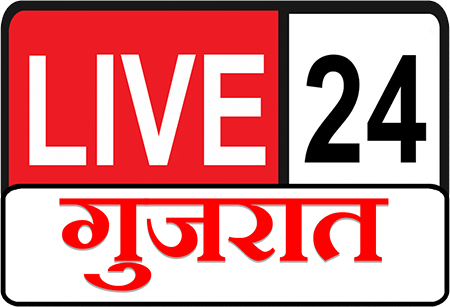Instead, naltrexone naltrexone side effects may cause or worsen withdrawal symptoms. You should not take naltrexone if you have recently stopped using opioid medications or opioid street drugs and are now experiencing withdrawal symptoms. Naltrexone offers hope for those struggling with alcohol use disorder. It’s not a magic pill, but a tool that can help reduce cravings and change drinking patterns.
Medications & Supplements
Naltrexone helps patients maintain sobriety by reducing cravings. Conversely, therapy helps patients develop coping strategies and address underlying issues. Some patients may benefit from long-term naltrexone use, particularly those with a history of multiple relapses or severe alcohol use disorder. In these cases, treatment may continue for years, with periodic reassessments to evaluate ongoing need and effectiveness. A 2008 study comparing naltrexone alone to naltrexone combined with cognitive-behavioral therapy (CBT) found that the combination treatment resulted in a 20% higher rate of abstinence after six months. This underscores the importance of a comprehensive treatment approach that includes both medication and psychological support.

About Medical News Today
Talk to your care team about the use of this medication in children. Ask your doctor or pharmacist any questions you have about naltrexone. Call your doctor if you have any unusual problems while taking this medication. Your doctor may order certain laboratory tests to check your body’s response to naltrexone. To be cautious when consuming alcohol, as their usual tolerance may be significantly reduced. Do not share naltrexone with other people, even if they have the same condition as you.

Addressing Naltrexone Use in Specific Patient Groups and Clinical Scenarios
Among the current alcohol users, around 2.9 crore are estimated to be affected by alcohol dependence syndrome (ADS).1 The major challenge in the treatment of ADS is the prevention of relapse. Anti-craving medications are a mainstay in the long-term pharmacological treatment of ADS. In India, where alcohol dependence is a recognized public health problem, it is essential to study naltrexone treatment response among treatment-seeking ADS patients. Naltrexone injection is used to help patients with opioid use disorder who have stopped taking opioids to stay drug-free and maintain their recovery. It is also used to help patients with alcohol use disorder stay alcohol-free.
Mental Health Treatment
Let your healthcare provider know if you or anyone in your family has tried to commit suicide. Check with your healthcare provider right away if you have pain or tenderness in the upper stomach, pale stools, dark urine, loss of appetite, nausea, unusual tiredness or weakness, or yellow eyes or skin. Aside from food-drug interactions, Naltrexone interactions are also possible and there are around 530 approved drug interactions for Vivitrol.
A comparative analysis highlights the difference between LDN and high-dose naltrexone in alcohol interactions. While high-dose naltrexone is FDA-approved for alcohol dependence, LDN lacks such endorsement, leaving its alcohol interaction profile understudied. Anecdotal reports suggest some users experience heightened sensitivity to alcohol on LDN, such as increased intoxication at lower doses, while others report no change. This variability underscores the need for personalized medical advice, especially for older adults or those with comorbidities, who may metabolize both substances differently. Clinically, individuals on LDN should monitor their alcohol consumption due to potential synergistic effects on the liver. Both substances are metabolized by the liver, and concurrent use may increase the risk of hepatotoxicity, particularly in those with pre-existing liver conditions.
Why It’s Important to Follow Medical Guidance During OUD Treatment
This option is well suited as a first line trial since it is easy to start, stop or adjust the dosage as needed. However, it is critical that you consistently adhere to treatment since missed doses can limit the effectiveness and reduce the medication’s ability to curb cravings. Naltrexone is an important medication, but timing is key to its effectiveness. It should be Alcohol Use Disorder introduced after detox, once your body is clear of alcohol and withdrawal symptoms have resolved. After a short block, the body thinks it needs to make more endorphins. Low dose naltrexone has been used for treating autoimmune diseases and even depression.

However, not all treatments for opioid dependence are safe and effective. Some, such as rapid detox, promise a swift recovery yet frequently lead to relapse. Others, such as medication-assisted treatment (MAT), require you to take opioid-replacement medications, essentially keeping you dependent on opioids. The risks and dangers of mixing naltrexone and alcohol include relapse, liver damage, accidents and injuries, and worsened mental health. Although the effects of naltrexone and alcohol combination generally aren’t dangerous, drinking alcohol, especially in large quantities, can still impact your opioid recovery journey.
Most side effects of naltrexone are minor and typically clear up on their own. However, severe reactions are possible and warrant medical treatment. If you experience any substantial side effects when using naltrexone, inform your prescribing doctor promptly. There’s some concern that because naltrexone diminishes the pleasurable effects of alcohol, some individuals may attempt to compensate by drinking more. This can be dangerous and increase the risk of alcohol-related harm.
- Naltrexone is prescribed after you’ve stopped taking opioids or drinking alcohol to help keep you from misusing these drugs again.
- The Food and Drug Administration (FDA) hasn’t approved naltrexone for weight loss or pain.
- Tell your healthcare provider if you have any of these side effects that bother you.
- Naltrexone injection comes as a solution (liquid) to be given by injection into the muscle of the buttocks by a healthcare provider once every 4 weeks.
Ask your healthcare professional how you should dispose of any medicine you do not use. The amount of medicine that you take depends on the strength of the medicine. Also, the number of doses you take each day, the time allowed between doses, and the length of time you take the medicine depend on the medical problem for which you are using the medicine. Using this medicine https://chaudhryabbasco.com/wet-brain-syndrome-symptoms-stages-essential-facts/ with any of the following medicines is usually not recommended, but may be required in some cases. A comparative analysis of LDN and alcohol reveals contrasting long-term implications. While LDN is often prescribed for its anti-inflammatory and immunomodulatory benefits, chronic alcohol use can suppress the immune system and worsen inflammation.
